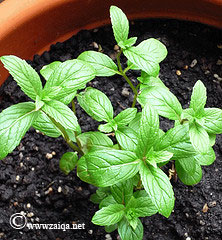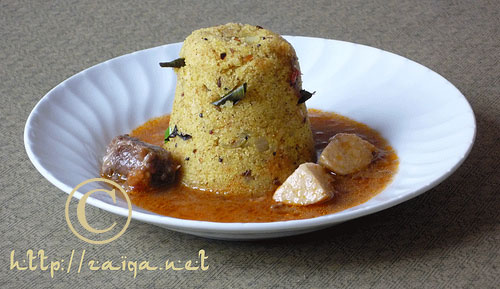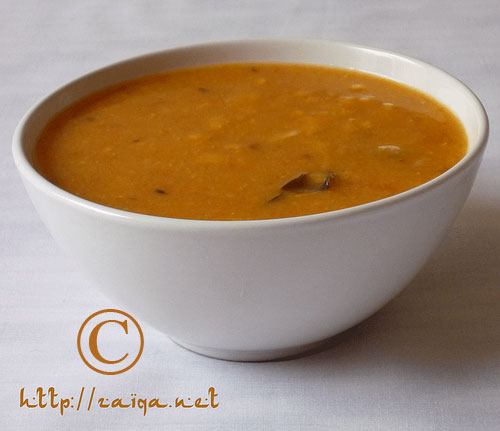Happy Indepedence Day all my dear Indians!
Kofta (in Urdu language, Singular-Kofta; Plural-Kofte) means meatballs. Among all the meatball curries that I prepare, two of them, the Methi-Gosht ke Kofte and this one that I am writing about today are the most favorite in my house and we devour them along with warm Naan, or Afghani Roti which I get from the market usually.
It is called as ‘Kacche Gosht ke Kofte’ as the meatballs/Kofte in this method are added raw into the hot gravy and are allowed to cook in it. The meatballs cook perfectly in the hot bubbling gravy within a few minutes. I love this technique because, as the raw meatballs cook in the hot gravy, they impert their juices and flavor and give a deep taste.
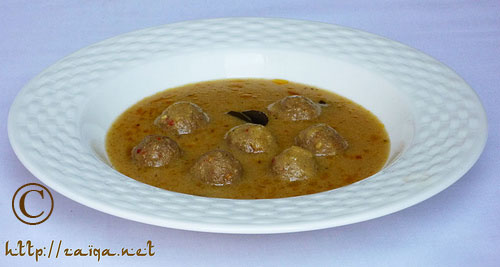
Amchur-Harimirch wale Kacche Gosht ke Kofte – Meatballs in a hot and sour gravy
The two main ingredients here are Amchur in the Kofta and Green chilli paste in the gravy. You can feel the light tartness in the meatballs when you have them and the slight hotness due to the green chilli paste in the gravy make you leave wanting for more. It is a very simple recipe.
As Ramadhan is fast appraching, you can prepare this curry in large amounts, portion it and store it in freezable plastic food storage boxes that are microwave safe. When you sit to have your meal after iftaar, just microwave the box for a few minutes, and you are done. It will save you a lot of time.
You can use ground meat to prepare this curry, or if ground meat is not available, then you can even use meat chunks to prepare it. Wash and cut the meat chunks into bite size pieces, and put the chunks along with the spices for meaballs in a food processor, and pulse till the meat is well ground and mixed with the spices. Food processor is one of the most important kitchen gadgets in my kitchen. It makes my work very easier.
Amchur-Harimirch wale Kacche Gosht ke Kofte – Meatballs in a hot and sour gravy
For the Meatballs/Kofte
Ingredients:
Ground Veal/Lamb/Goat meat (or) Veal/Lamb/Goat meat chunks cut into bite size pieces or mince – 300 grams (read the notes above)
Dry Raw Mango/Amchur – 2 tsp
Red chilli flakes – 2 tsp
Garam Masala – 1 tsp
Salt/Namak – 1 tsp
Turmeric/Haldi – 1/2 tsp
Ginger-Garlic/Adrak-Lahsun paste – 2 tsp
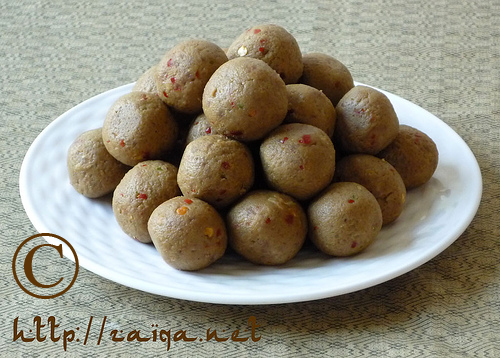
Kacche Gosht ke Kofte – Raw meatballs
Method:
1. In a food processor or a blender, add all the ingredients and pulse till the mixture is all well mixed. Remove it into a bowl. Take a small amount into your hand and shape into little balls (approx 1 inch in diameter) rubbing the mixture between your palms. Continue making balls untill all the mixture is completed. Keep aside.
2. Wash your hands well with soap.
TIP: To freeze meatballs ahead of time: You can prepare the meatballs and freeze them for future use.
Form meatballs, and place them on a parchment paper lined baking sheet in the freezer. Once the meatballs are hard and well frozen, transfer them to a resealable plastic bag and store in the freezer for up to 3 months. To serve, thaw and cook them in the curry.
For the Curry/Gravy:
Ingredients:
Canola oil – 4 tbsp
Yellow onion – 3 , large, thinly sliced
Salt – 1 tsp
Seseme seeds/Til – 1 tsp
Cumin seeds/Zeera – 1 tsp
Carom seeds/Ajwain – 1 tsp
Clove/Laung – 2
Green cardamom/Elaichi – 4
Cinnamon sticks/Dalchini – 1 inch stick
Ginger-Garlic paste – 2 tsp
Green chilli – finely chopped, 2 tsp
Red chilli powder – 1/2 tsp
Yogurt – 2 cup, lightly whipped
Beef Stock – 1 litre
Curry leaves – 6
Dried red chilli – 4, broken into two, seeds shaken out
Method:
1. Pour 3 tbsp oil into a large non-stick frying pan at medium heat and as soon as it warms up, add the onion and salt. Saute it for 3 minutes, then cover the lid. After 3 minutes, stir the onions, add a tablespoon of water and cover the lid again. Continue doing this until the onions are well browned and soft.
2. Add seseme seeds, cumin seeds, carom seeds, clove, green cardamom, cinnamon, and ginger-garlic paste and green chillies. Saute them for 2-3 minutes. Sprinkle red chilli powder.
3. Add the yogurt and keep strirring it continously for 1-2 minutes. Turn the heat off. Once cool, pour this gravy into a blender container and blend till finely pureed.
4. In the same pan pour 1 tbsp of oil and as soon as it warms up add the dried red chilli powder and curry leaves. As they begin to crackle in a minute or two, pour the pureed sauce back into the pan. Add the meat stock and increase the heat to medium high. Let it come to a boil.
5. Lower the heat to medium low, and gently add the meatballs one by one to the gravy in a single layer, and close the lid. Let it cook for 10-15 minutes. Keep gently giving it a stir every 3 minutes or so taking care not to break the meatballs. Serve warm.
Suggested Accompaniments: This curry goes very well along with Naan or Afghani Roti, or even along with steamed Basmati.
This curry goes all the way to Srivalli of ‘Cooking 4 All Seasons’ who is hosting the event- Curry Mela.
Also, congratulations to Jyothi of Shadruchulu for winning the title of ‘The Best Hyderabadi Blog 2008′.
Have a pleasant weekend eveyone!
Luv,
Mona



